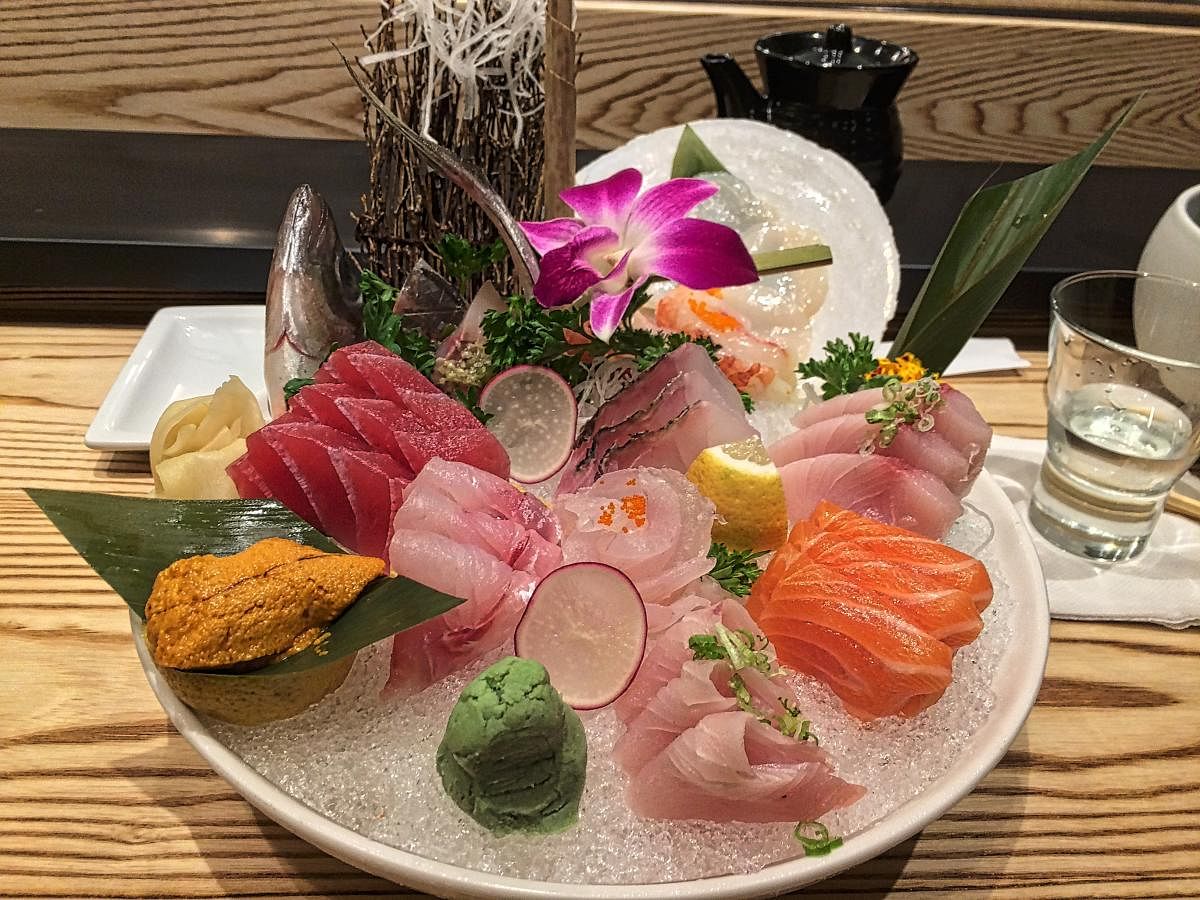

Some people eat for fuel and then there are the palatally-evolved, the chosen few who eat solely for taste. The former are happy if you give them biryani provided there’s lots of it, while the latter, regardless of gender, start squeaking orgasmically when the word sushi is mentioned. When you’ve overdosed on olives, are bored with bolognese, maxed out on momos and fed up to the face with butter chicken, perhaps it’s time to take a walk on the wild side. Many moons ago there was just one Japanese restaurant in Bengaluru, the ominously named Black Dahlia —seriously what were they thinking when they named it after Connelly’s fictional serial killer? Today, there are nearly a dozen Japanese restaurants but no matter how hard they try, they never attain the standard served in the humblest ryokan from Tokyo to Kyoto.
Swooning over sushi
So should you try sushi? By all means, but please, not for the bragging rights indulged in by those with a sophomorically sweaty love of exotic food. I once took my friend from Chennai to a Japanese restaurant called Sapporo East in Manhattan. He gamely laboured through the fish custard and the crunchy sesame salad but turned a delicate shade of green when the sashimi was served. “Maccha, these chefs are in such a hurry they are serving raw fish… these people who are eating this, how hungry are they?” If you are busting your cherry blossom, in a manner of speaking, try the omakase, a Japanese-style tasting menu with the chef’s choice of the freshest ingredients. You look at the options and decide how much you would like to spend and from then on the chef takes charge. I was recently at a standalone restaurant named Jiki Miyazawa in Kyoto where we asked for an omakase for two at Y14,000, yes I know, I swooned. As American food critic Jonathan Gold says, “At a good sushi place, the kind that makes you swoon, the first piece you are offered is the tell, a statement of purpose that should let you know whether you are in for an hour of bliss or an hour of sake-lubricated sadness at the happiness that might have been.”
For the sake of sake
Here we started with some intensely flavoured sake, served cold in an
exquisite porcelain bowl. Then came the food, a 5-course meal, kick-started magnificently with some gorgeous hamachi, served sashimi style with freshly grated wasabi and the merest dab of Kikkoman soy sauce.
That was followed by three perfect slivers of maguro, which is tuna from the belly portion with a delicate layer of fat, redolent of the sea and beautifully arranged in a fantail with a little bowl of soy on the side. It is that precise union of the subtle and the sharp imbued with the clean, elegant flavour of the ocean and that amazing umami taste that has lovers of Japanese food swooning with delight. The next course was flying fish roe caviar, incandescent bright-orange jewels floating on a tightly wrapped roll of sushi rice with nori (seaweed) bringing to mind the national tri-colour.
We collected our thoughts, sipped our sake and compared notes. And then came the magical drama of the Wagyu: a beautiful slice of tender beef, crusted with the ashes of spring onion stalks, done to perfection, lightly charred on the outside and gleaming pink on the inside, crusted with a sprinkling of sansho pepper, made with what else, cherry blossoms? Yes, the world may be our oyster but if we are to be dazzled by its pearly luminescence, we were immensely grateful that our culinary guide, our hotel concierge Omagashi-san, was a consummate professional. Rather than rely on TripAdvisor where the reviews are written by ignorant foreigners, I prefer to rely on concierges and Tabelog, the Japanese website where users display their expertise without worrying about peer judgement, something which is omnipresent in Japanese society.
This is especially critical with high-end Japanese food where discovering the difference between the adequate, the good and the ethereally sublime is tricky. Someone compared fine dining to diving for buried treasure: sometimes you find buried treasure but often you just wind up soaked.
(The author is an old Bengalurean and impresario of comedy and musical shows who considers himself fortunate to have turned his passions — writing and theatre — into a profession.)